What to do if my Sharp LCD TV settings cannot be restored to normal?
- Bbarbara51Aug 8, 2025
If you've made complex adjustments to your Sharp LCD TV settings and can't restore them to normal, you can reset the settings to the factory preset values.

What to do if my Sharp LCD TV settings cannot be restored to normal?
If you've made complex adjustments to your Sharp LCD TV settings and can't restore them to normal, you can reset the settings to the factory preset values.
What to do if I cannot carry out other operations while downloading on my Sharp LC-40LU700E?
If you find that you cannot perform other operations while your Sharp LCD TV is downloading, allow the update to complete before attempting any other actions.
Why will the software update not be carried out on my Sharp LC-40LU700E?
The software update for your Sharp LCD TV will not proceed if no new software is available at the specified download time. Confirm that new software is available before proceeding with the update.
How to keep Sharp LC-40LU700E LCD TV in standby mode for download?
To ensure a successful download on your Sharp LCD TV, keep the TV in standby mode. Do not turn off the power using a switch on the TV.
| Screen Size | 40 inches |
|---|---|
| Resolution | 1920 x 1080 pixels |
| Display Technology | LCD |
| Backlight | LED |
| HDMI Ports | 3 |
| USB Ports | 2 |
| Smart TV | Yes |
| Wi-Fi | Yes |
| Audio Output | 20 W |
| Weight | 9.5 kg |
Important safety information regarding the mains lead and plug for users in the UK.
Crucial safety guidelines to follow before operating the television to prevent hazards.
Guidelines for safely moving the television to avoid damage or injury.
Detailed explanation of each button on the remote control and its corresponding function.
Identifies and describes the controls and connections on the front and rear of the TV.
Lists included items and provides instructions for attaching the television's stand.
Step-by-step guide for automatic setup, channel tuning, and connecting external devices.
Steps before powering on, including antenna connection and wall mounting precautions.
Walkthrough of the automatic installation process for setting up channels and preferences.
Checking signal quality for digital broadcasts and installing CI module for channels.
How to turn the TV on/off, use standby mode, and switch between digital and analogue broadcasts.
Guide to setting up EPG, configuring display options, and genre settings.
How to navigate and select TV programmes using the EPG, including search functions.
How to access and use the teletext service for information and entertainment.
How to connect devices using HDMI and DVI cables, including HDMI 2 terminal usage.
Connecting SCART devices and utilizing AV Link functions for seamless control.
Setting up component video and digital/analogue audio connections.
Explanation of AQUOS LINK and its benefits for controlling HDMI devices.
Setting up AQUOS LINK for control, auto power, recorder selection, and channel/genre preferences.
How to operate connected HDMI devices using the TV's remote control.
How to open, navigate, and select options within the TV's main menu system.
Fine-tuning core picture elements like brightness, contrast, hue, saturation, and colour temperature.
Utilizing features like 100 Hz, Film Mode, DNR, and selecting AV modes for optimal viewing.
Customizing sound settings and configuring audio input sources.
Optimizing power consumption with ECO settings and configuring the sleep timer.
Setting up channels automatically or manually via digital and analogue searches.
Configuring individual services and advanced settings for cable broadcast search.
Manually adjusting analogue channels, colour, sound systems, and managing channels.
Setting PINs for child lock, parental ratings, locking buttons, and configuring quick start.
Using WSS and manual selection for adjusting picture size and aspect ratio.
Configuring OSD language, subtitle preferences, and multi-audio language selection.
How to display channel information, time, and game play time on screen.
Customizing input sources by selecting signal types, skipping inputs, and assigning labels.
Using the TV for viewing photos and playing music from USB devices.
Configuring slide shows, background music, and understanding USB device compatibility.
How to connect a PC via HDMI or analogue and display its image on the TV.
Using Auto Sync and manual fine-tuning for optimal PC image quality and position.
Configuring RS-232C settings and understanding command formats for PC control.
A comprehensive list of commands for controlling TV functions via RS-232C.
Solutions for common issues and steps to reset the TV's PIN code.
How to search for and download TV software updates using the DVB-T broadcast signal.
Guide to updating the TV's software using a USB device.
Detailed technical specifications for various LCD TV models.
Continuation of technical specifications and information on available optional accessories.
Data on power consumption in various modes and annual energy usage.
Table detailing broadcast ratings for child lock and a list of abbreviations.
Instructions for proper disposal of used equipment for private households and businesses.

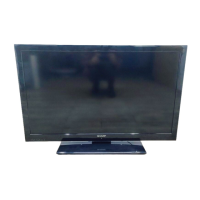
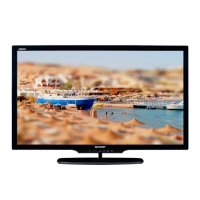
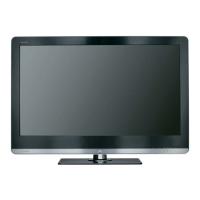

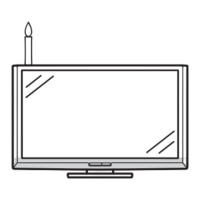
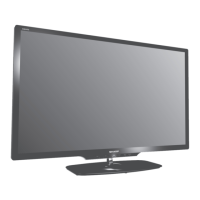



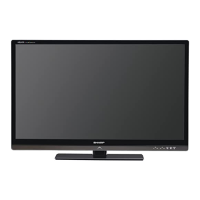
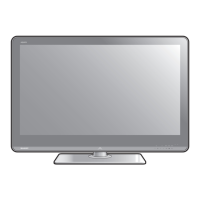
